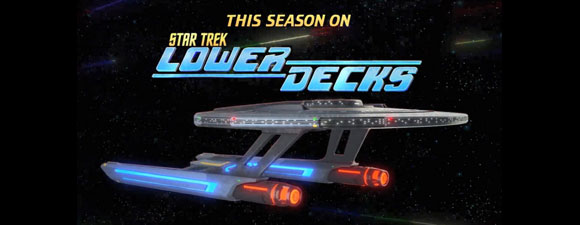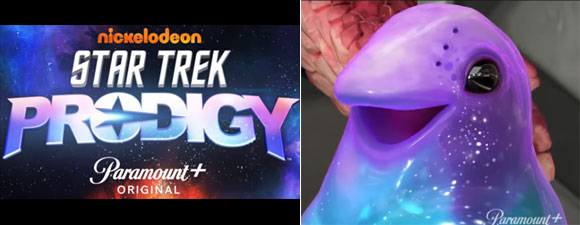Projections
By Michelle Erica GreenPosted at January 13, 2004 - 2:01 PM GMT
See Also: 'The 37s' Episode Guide
The Doc is summoned to the bridge in the midst of an emergency via a new projector that Torres has been experimenting with. She then transfers him to the mess hall as the ship is overrun by Kazon. But when the Doc returns to Sickbay, Lieutenant Reginald Barclay - one of the holographic programmers who helped create the EMH - appears, to try to convince him that he is really Dr. Louis Zimmerman, and that he is home, running a holonovel gone awry.
Barclay tells the Doc that everything he has experienced on Voyager is part of a scenario he was playing out, and that he must shut down the program and come back to himself. Barclay reinitializes the scenario to prove his point, making the Doctor relive his first hours on board Voyager in the midst of the crisis with the Caretaker, and introduces him to Kes - Zimmerman's wife, according to Barclay.
But Chakotay comes into the scenario to tell the Doctor that he is what he is - an artificial life form, an emergency medical hologram, and a vital member of Voyager's crew - and to warn him that if he does as Barclay demands, his program will cease to exist. The Doctor chooses the reality he knows over the fantasy Barclay holds out, and finds himself on an empty holodeck, with only his friends around him. Kes teases him a little about the metaphysical dilemma he faces - never being sure whether he's real, or living out someone else's holographic fantasy.
Analysis:
Speaking as a fan of holophilosophy - the Barclay and Moriarty episodes on TNG, the planet of the holo-people on DS9 - I've liked the idea of a permanent holocharacter from the start. And the Doc is a terrific concept: programmed with minimal personality (and now that we know Reginald Barclay was responsible for his interpersonal skills, what personality he does have makes more sense!) he must learn to be a person in every sense of the word. The Doc probably grew more than any other character on Voyager last season, and this episode may be the single most successful example of character development we've gotten on the show. What's lovely that it's also witty and moving.
Trek's always been interested in thoughts-shape-reality scenarios, but there's something chilling as well as exciting about holotechnology - the idea that one could lose oneself in an artificial world, bring back a dead lover or friend, recreate home in its absence. I've been surprised that Sandrine's is the only example of the latter on Voyager; I'd expect that they might have serious holoddiction problems like Barclay's in TNG. Why deal with the reality of being stuck in the Delta Quadrant when you can be home, or anywhere else in the universe, instead?
But the Doctor's situation is almost the reverse of the rest of the crew's: once they find their way back, he may be switched off permanently and cease to exist...or, like Moriarty, be aware of the passage of time, yet unable to interact with the world of corporeal matter. He's already had to cope with the idea that he can be switched off or reprogrammed at the whim of others, and with the terrifying concept that the crew might abandon him along with the ship, leaving him permanently active and alone. No wonder he resorts to sarcasm and acidity to distance himself.
Which brings us to this episode and its philosophical quandary: the Doctor as Pinocchio, given the opportunity to believe that he is real, but forced to live a lie to do so--and a lie which might destroy himself in the process. An interesting psychological conundrum: will he throw out his reality principle to become real? Ultimately he decides that he doesn't need to. Chakotay tells the Doctor that it's not what he's made of, but who he is that matters, and oddly enough, the Doctor never really seems to waver in his belief that he is what he is. He doubts Barclay's claims that he could be the mundane Dr. Zimmerman throughout, and much as he might want to believe that Kes is his wife, he knows better. In fact, he prefers the real relationship he has with her in Sickbay to the fantasy which he recognizes, regretfully but assuredly, as false.
For an artificial life-form, the Doctor's personality is incredibly strong - perhaps stronger than Data, whose desire to be human led him to the immense overhaul we were presented with in Generations once he installed his "emotion chip." The Doctor has no such convenience: he gains experience with emotion the way we do, by experimenting and learning and suffering over time. Robert Picardo has done an astonishing job with this character, and Frakes' direction of this episode - distorted, paranoid fisheye views opposed to nice normal two-shots - is very effective.
Michelle Erica Green reviews 'Enterprise' episodes for the Trek Nation, for which she is also a news writer. An archive of her work can be found at The Little Review.



